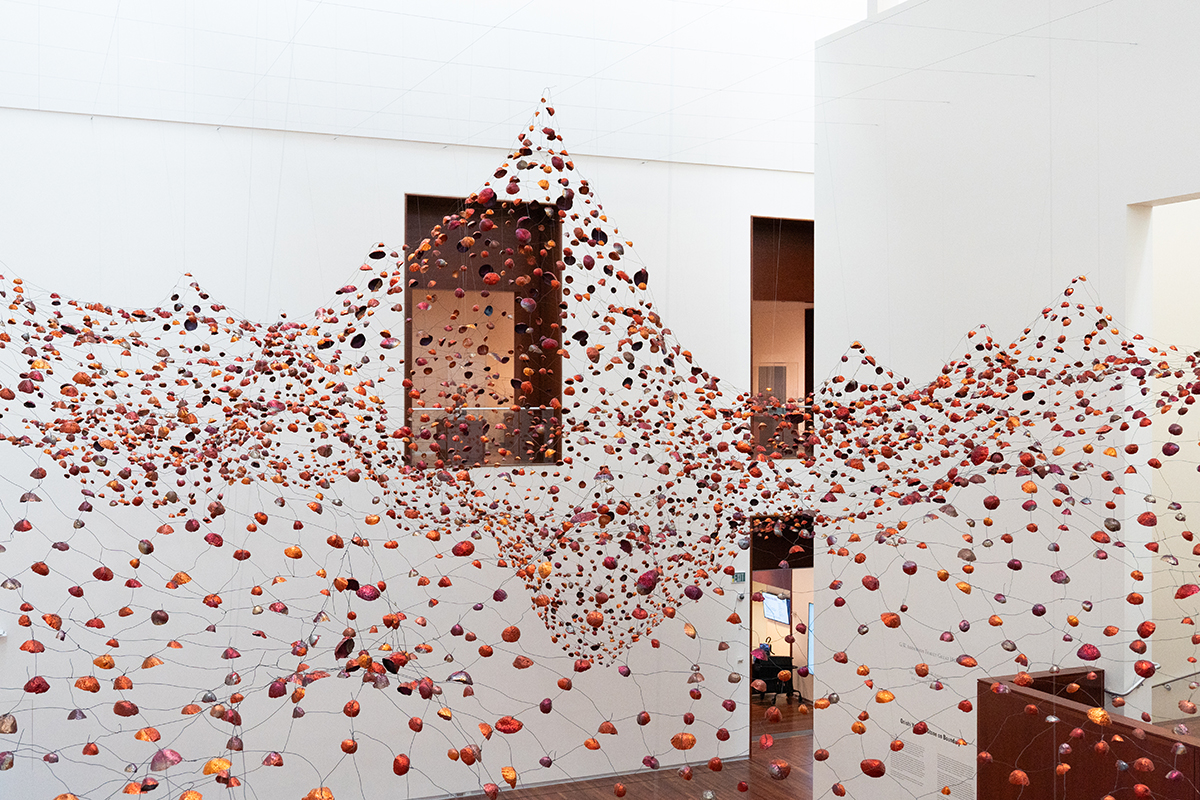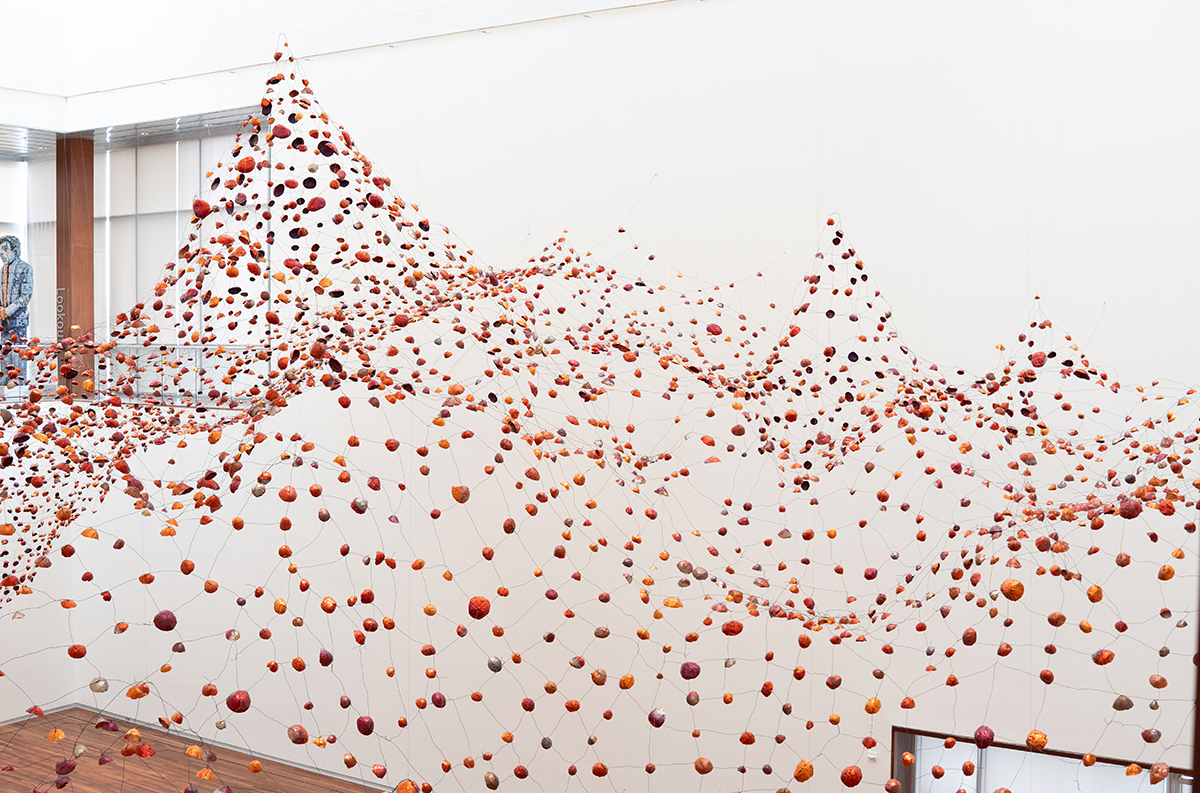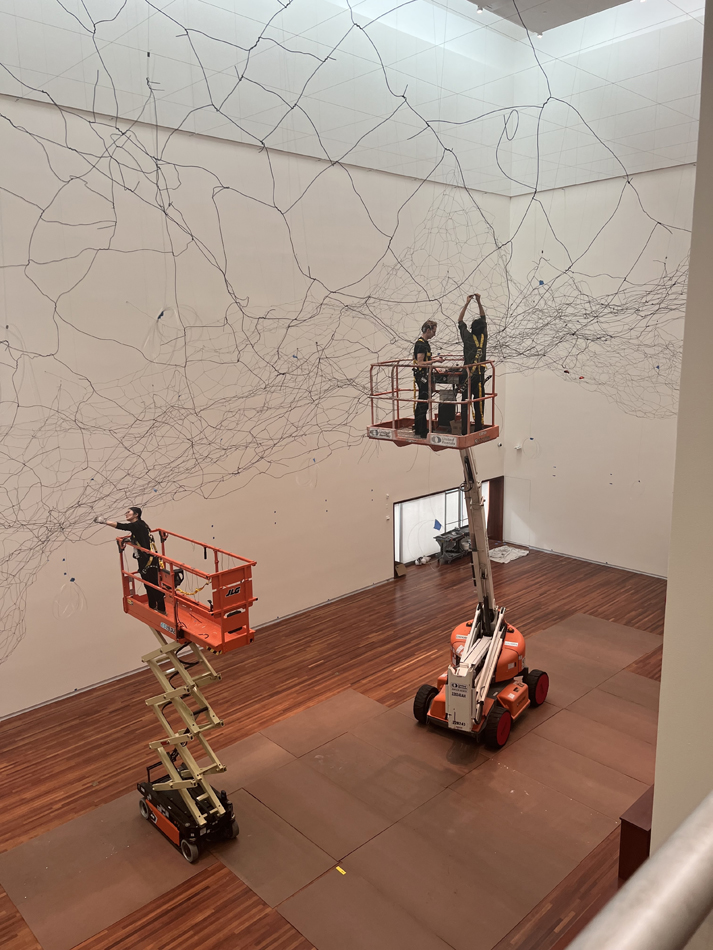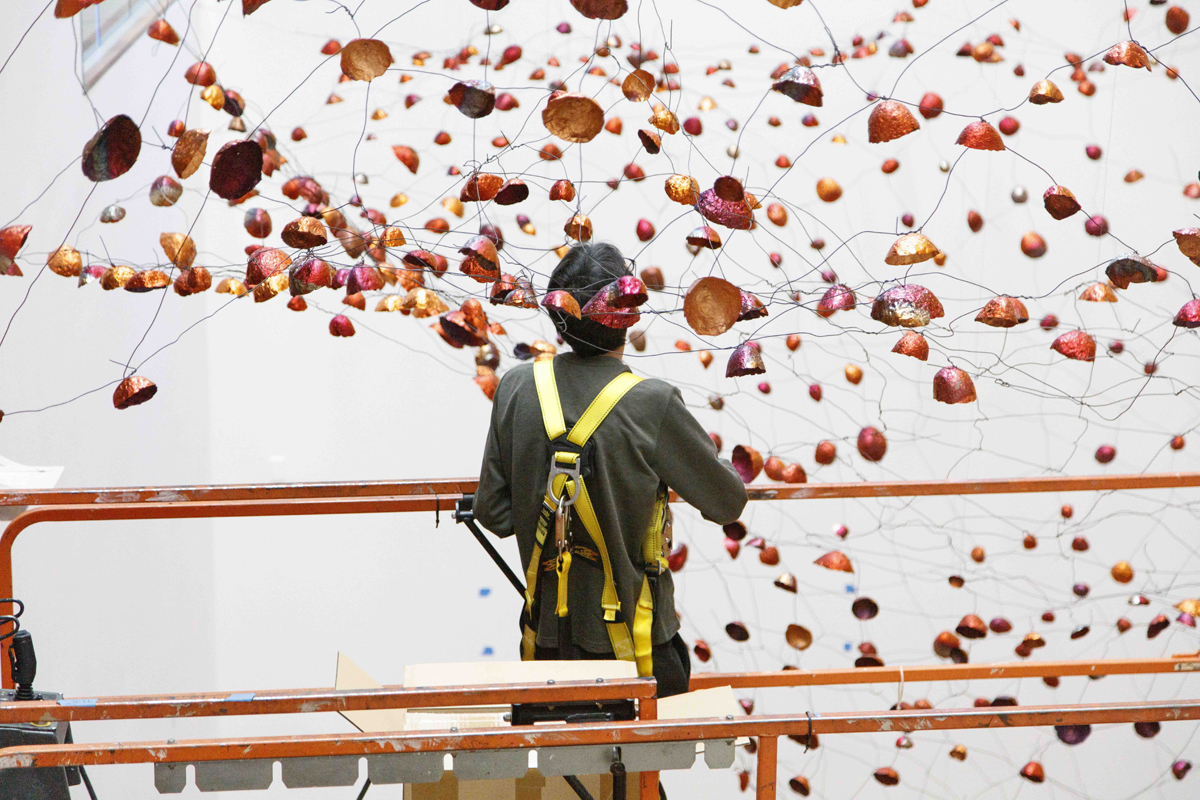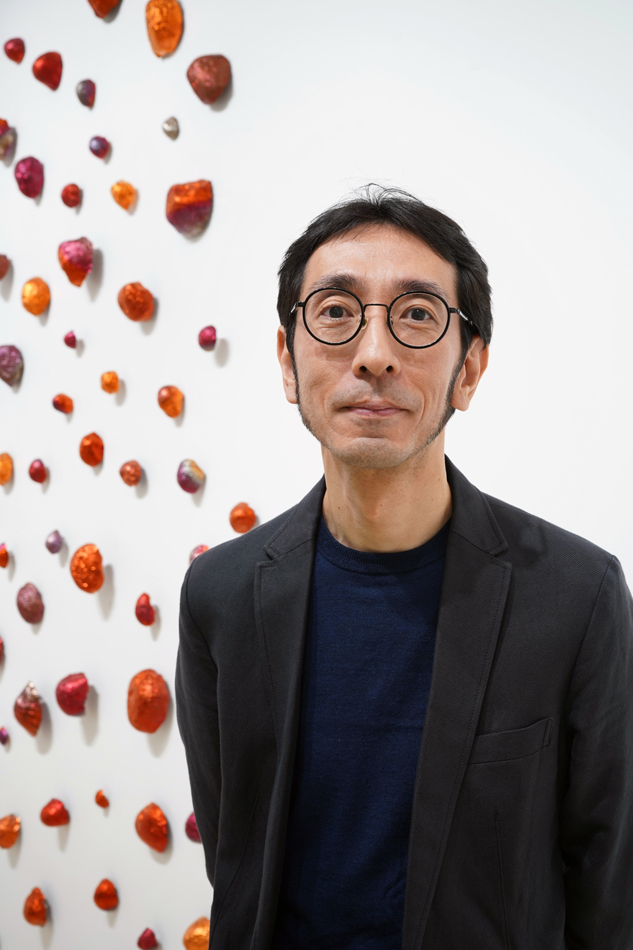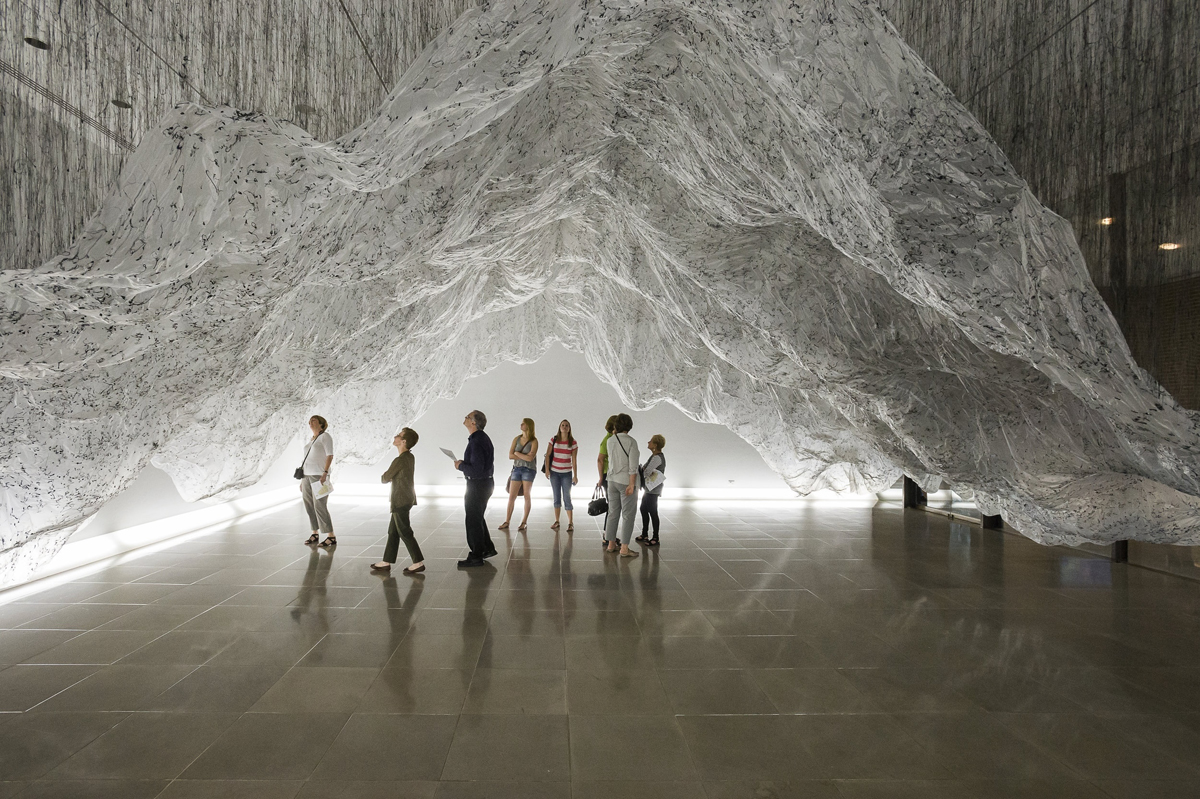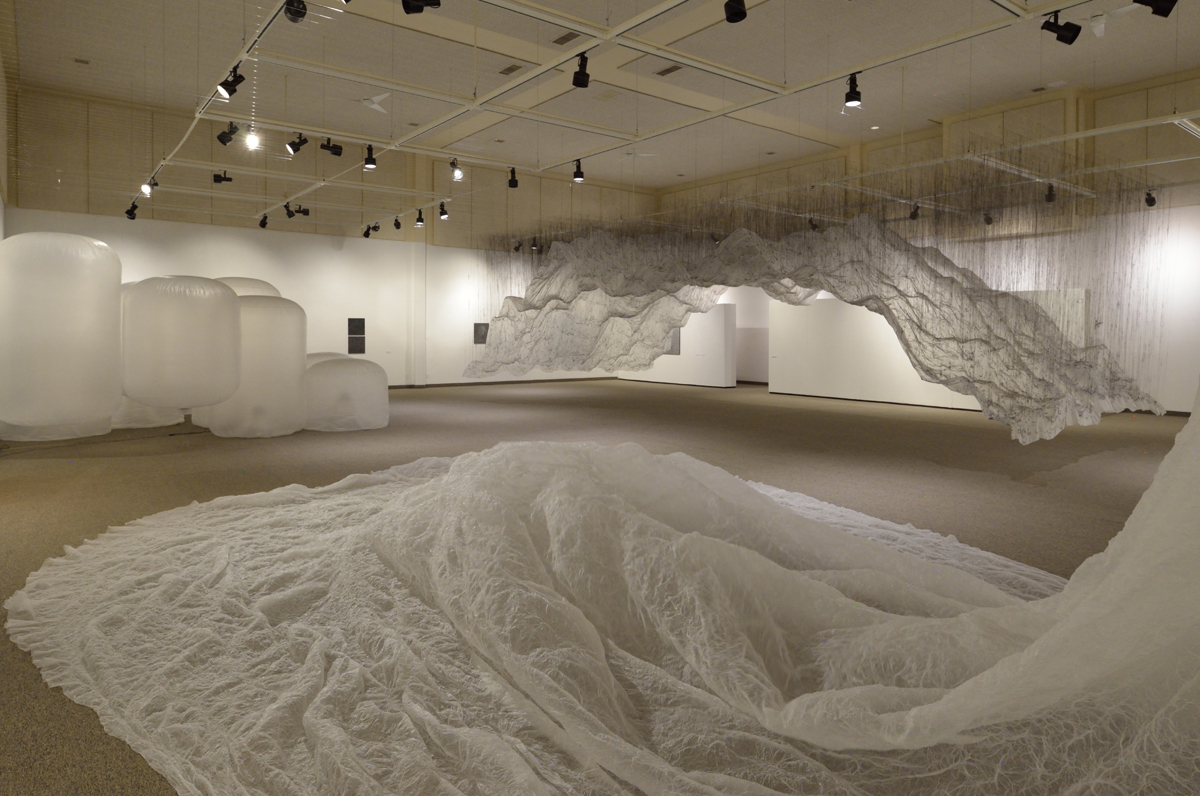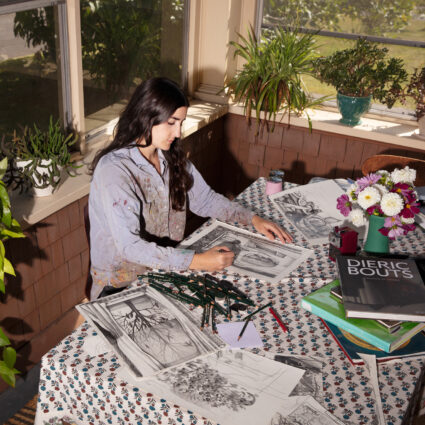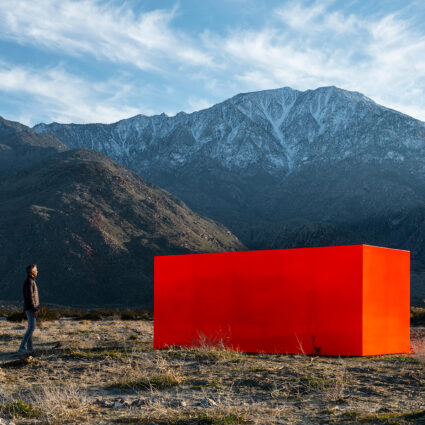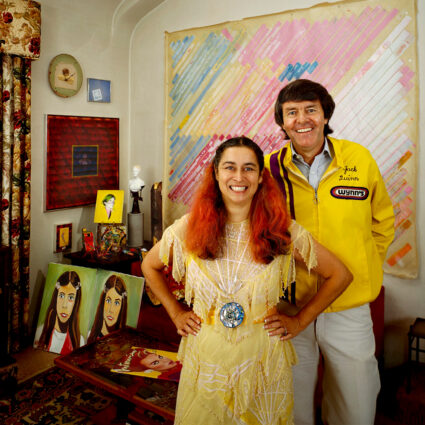Yasuaki Onishi’s site-specific installation Stone on Boundary poetically links Japan and Utah’s mountains, rivers—and entanglements in the mining industry.
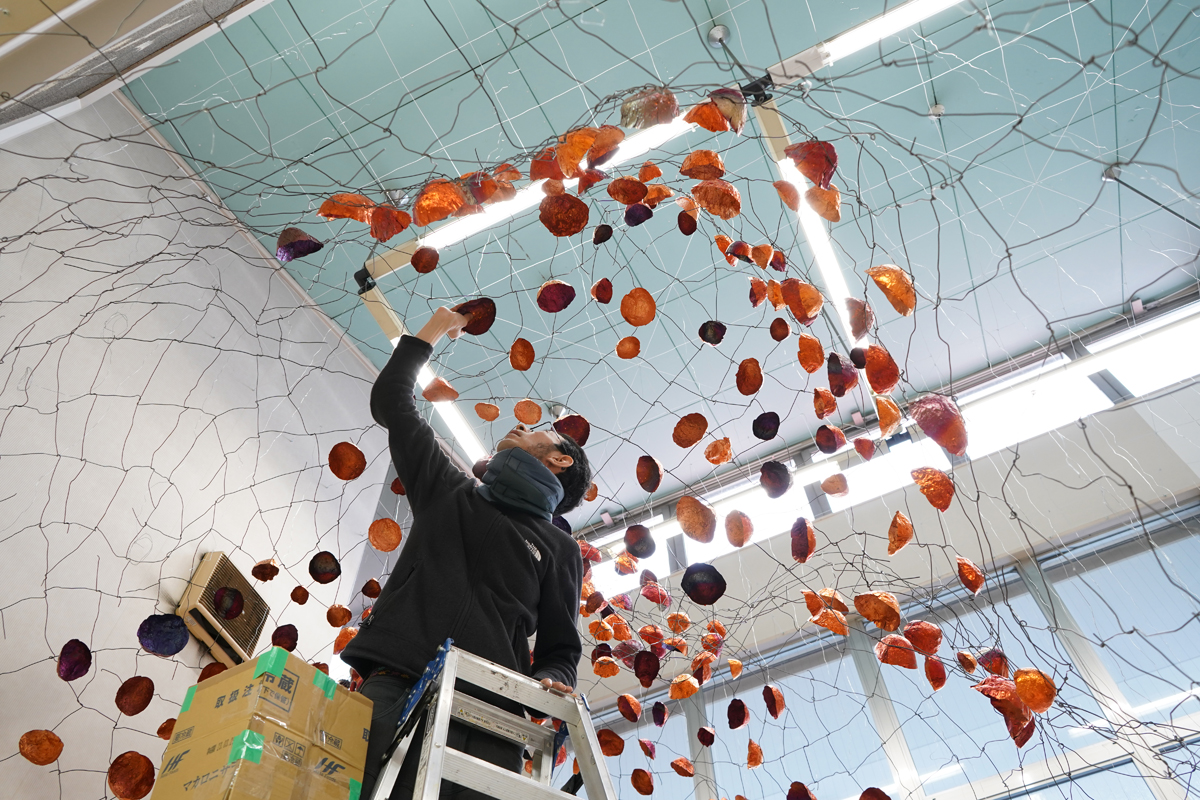
Seen from above, the installation appears to be a floating mountain range, but when viewed from below, it evokes the sensation of being underwater, gazing up at swift currents from the stillness of a riverbed. Through copper molds of river rocks, woven into lace-like wire structure suspended from the high walls of the G.W. Anderson Family Great Hall at Utah Museum of Fine Arts, Yasuaki Onishi envisions the movement of stone through various types of Utah terrain, shifting and changing, much like the multidimensional perspectives that engage viewers as they move through the space. Heavy forms appear weightless and transparent, boundaries blur between earth and sky, and perceptions expand beyond the immediate into an imagined past and future.
The artist recalls, “The first time I went to the river to find some stones, I could see this stone is traveling, from the high mountain it goes down. At the beginning it’s a big rock, but going down the river it becomes a small stone, then it goes into the ocean. I can see it changing and traveling.”
Onishi’s site-specific installation, Stone on Boundary, opened on February 15 and will be on view at UMFA in Salt Lake City for at least two years. The artist employs 5,000 copper foils, an integral but often unseen material in electronic devices, to encapsulate the surfaces of river stones from the mountains surrounding the Great Salt Lake and his hometown of Osaka, Japan. By hammering and shaping the foils over these stones, he connects with geological and elemental processes of the earth, creating delicate shells that capture the stones’ textures and forms.
I find a stone and make a mold. I can see it inside and outside. I can imagine its past and future.
Onishi says, “On the riverbed, I find a stone and make a mold. I can see it inside and outside. I can imagine its past and future, and the mold is only part of the stone, half its shape. It means I can’t understand everything, just part of the stone, but I can still see the inside, just not the whole stone.”
Beyond its poetic engagement with landscape, Stone on Boundary subtly reflects on ecological concerns. Utah’s rivers, shaped by seasonal changes and human impact, are both life-giving and precariously vulnerable. Snowmelt swells their waters, but drought and diversion for human use often leave them depleted. The Great Salt Lake, a critical environmental feature of the region, has been shrinking, leaving exposed lakebeds laced with copper, arsenic, and other heavy metals due to years of geological erosion and open-pit mining activities. As the toxic particles become airborne in dust storms, they could pose a serious public health risk. Environmental interventions to restore the lake’s declining water levels are underway.
The presence of copper in Stone on Boundary is a poignant reminder of the fragile balance between natural beauty and environmental degradation. Onishi’s home nation of Japan is a global leader in copper recycling, ensuring sustainable use of resources. Companies like Mitsubishi Materials and Sumitomo Metal Mining refine and repurpose copper from electronics, power cables, and industrial machinery to minimize waste and environmental impact.
“Japan refined copper exports that supplied the world for over 200 years,” reads a statement on the UMFA website. “Bringing these foils to Salt Lake City, home to the largest open-pit copper mine operating today, connects the two places through a shared material resource that has a profound effect on the world.”
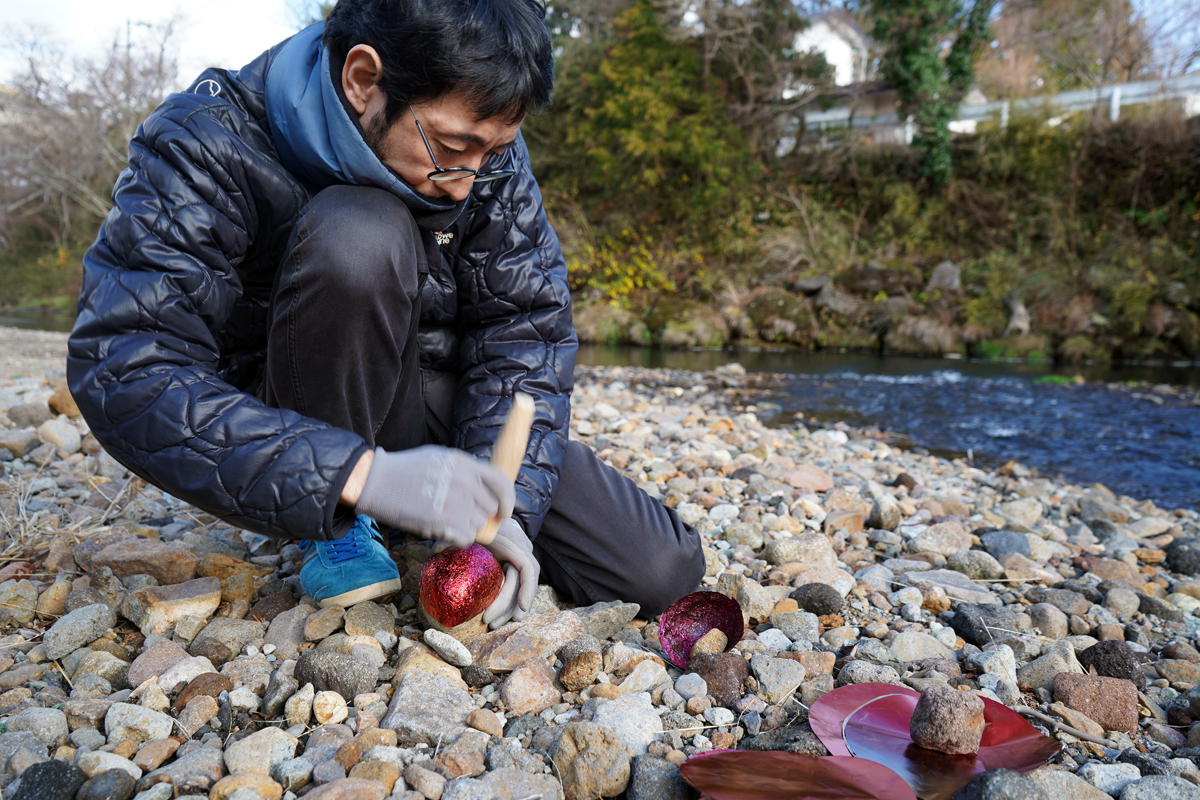
Onishi’s work first gained significant attention in the United States with his installation reverse of volume RG (2012) curated by director Kim Davenport at the now-closed Rice University Art Gallery in Houston. As a student at Northern Arizona University in 2015, current UMFA curator Emily Lawhead won a research award to conduct studio visits with contemporary installation artists in Japan. Captivated by Onishi’s extraordinary approach, she invited him to exhibit in Flagstaff. In 2018, Lawhead curated Hidden Landscapes at the Coconino Center for the Arts, and the exhibition featured three site-specific works by Onishi.
In reverse of volume CCA (2018), the artist constructed translucent mountainous shapes with large polyethylene sheets and drips of black glue. When suspended, these otherworldly forms became what Onishi calls “inverted mountains,” turning traditional notions of landscape as solid and earthly into something impermanent and celestial.
Onishi is deeply interested in unseen negative space—traces of absence—and the way light and shadow shape our understanding of form.
Now serving as associate curator of modern and contemporary art at UMFA, Lawhead says, “The Great Hall is difficult to program because architecturally, it’s a challenge. Yasuaki doesn’t hang objects from the ceiling, he uses a wire grid that’s attached to the walls, so this technique is optimal for the high ceilings and spaciousness. There’s also a second-floor balcony with an aerial view of the installation that he had to consider. I knew he could do it.” For Lawhead, collaborating with Onishi at UMFA brings her curatorial practice full circle in a meaningful way, from her research as a student visiting Japan to her current position as a museum curator in Utah.
Born in Osaka, Japan, in 1979, Onishi studied sculpture at the University of Tsukuba before earning his MFA from Kyoto City University of Arts. His work has often explored the materiality of space, using unconventional materials to create immersive environments that challenge perception. He is deeply interested in unseen negative space—traces of absence—and the way light and shadow shape our understanding of form.
Stone on Boundary is certainly an aesthetic experience, but it’s also an invitation to consider the interwoven relationships between nature, time, and human impact. Landscapes aren’t static. They shift, dissolve, and reform, just as our bodies do. Whether through his delicate suspended structures or his meditative casting process, Onishi continues to offer viewers multidimensional ways of seeing that embrace impermanence, transformation, and the unseen forces that shape our world.
